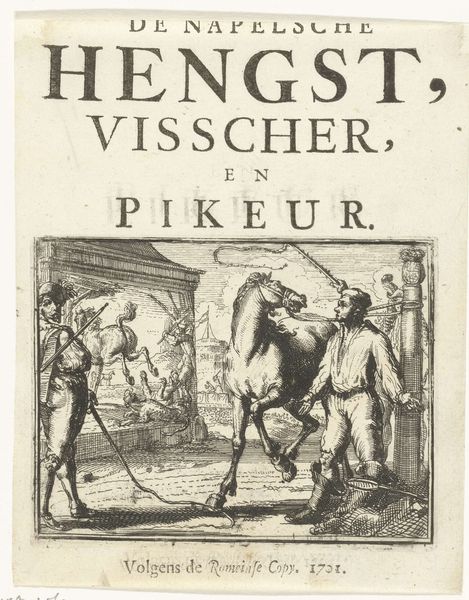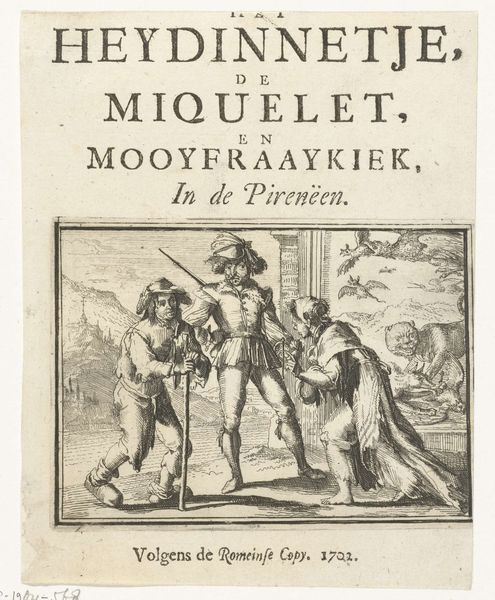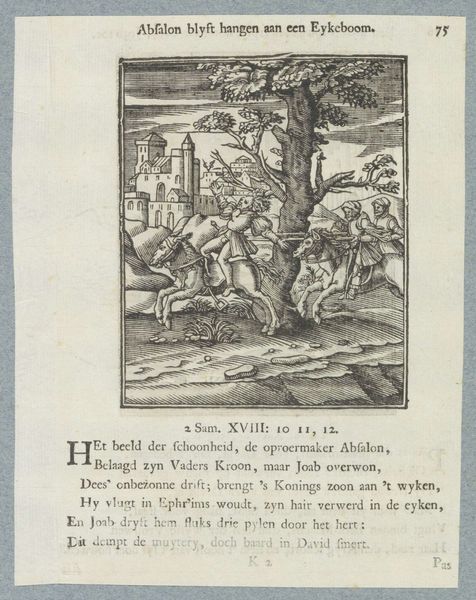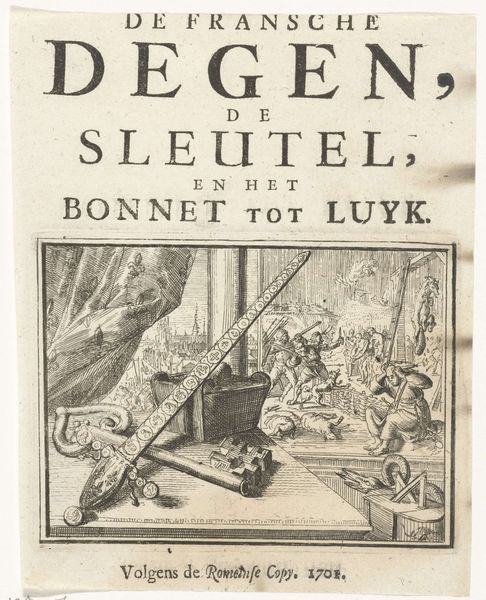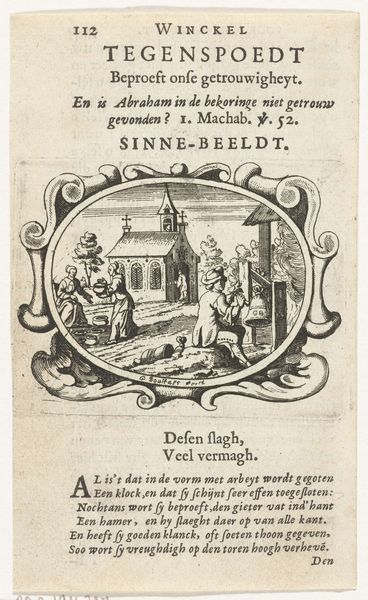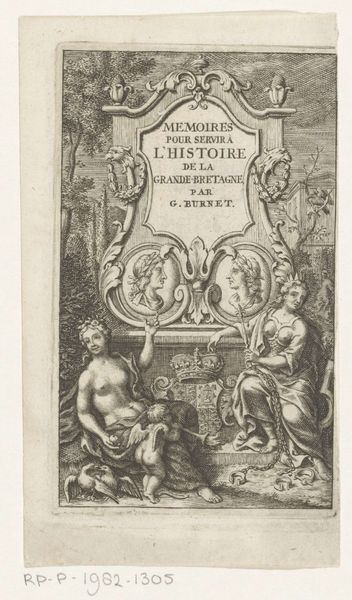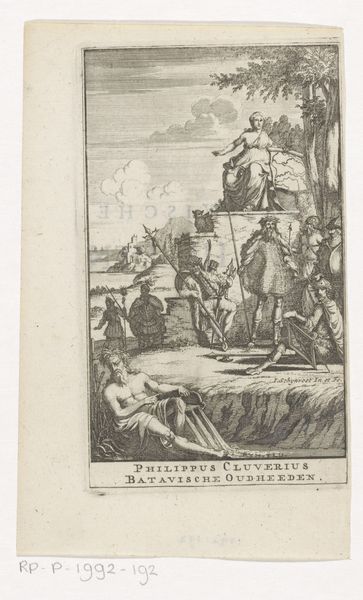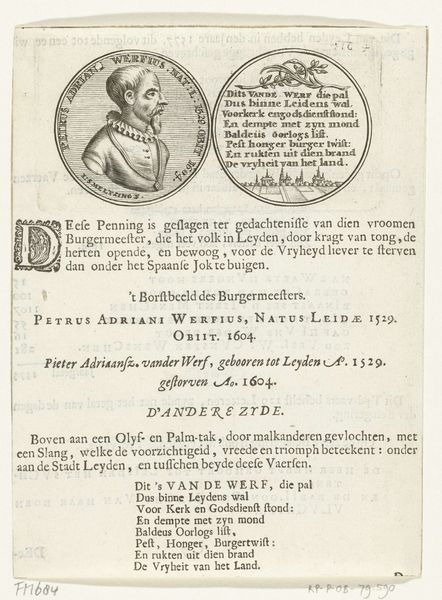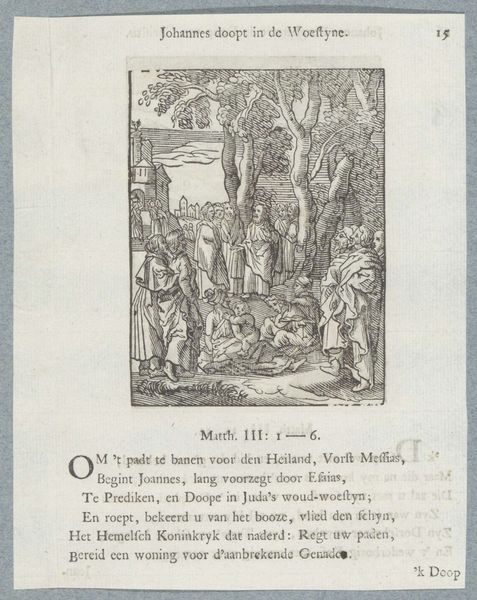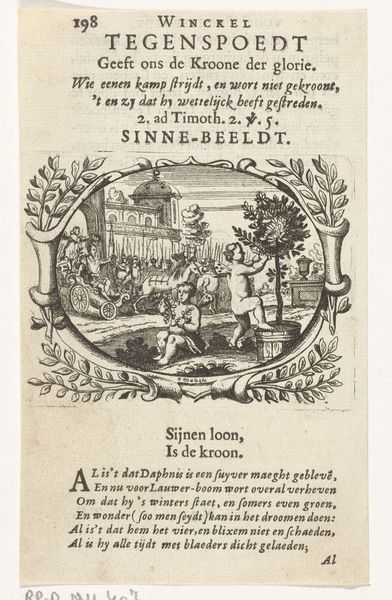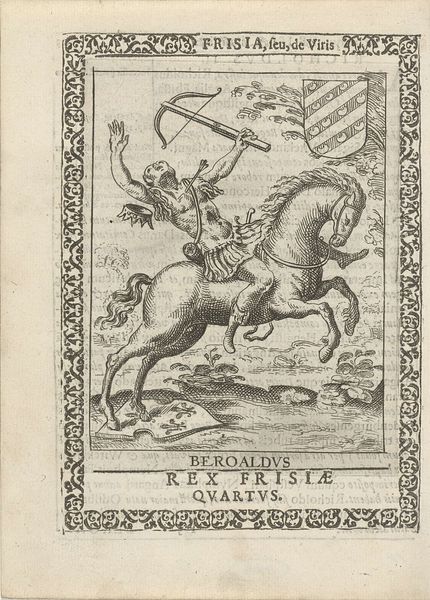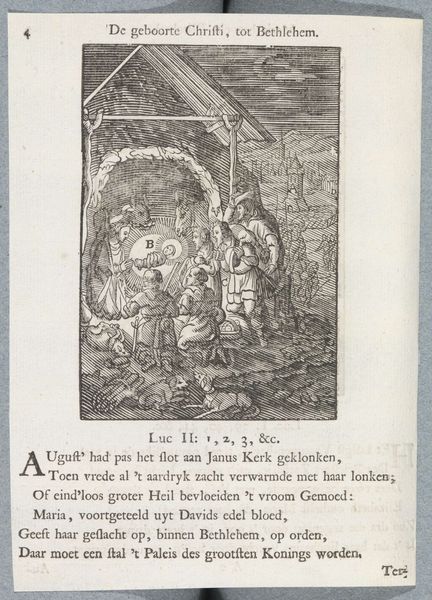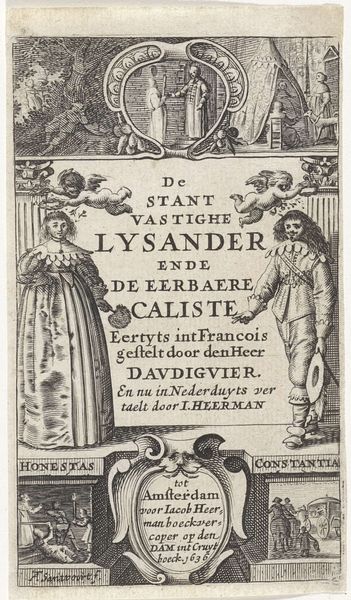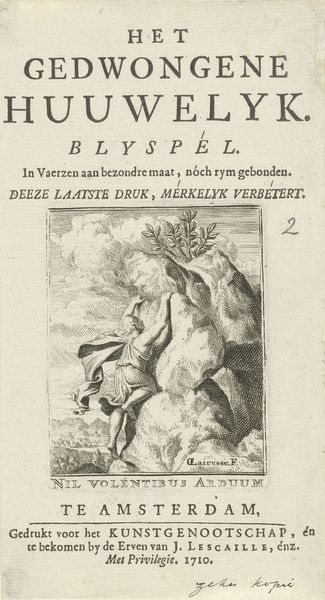
Titelblad voor het pamflet: De Leuterbol van Diest, de Hond en de Pikbroek, by den Laatste Stuyver, 1702 1702
0:00
0:00
print, engraving
#
comic strip sketch
#
narrative-art
#
baroque
#
mechanical pen drawing
# print
#
pen illustration
#
pen sketch
#
old engraving style
#
personal sketchbook
#
pen-ink sketch
#
pen work
#
sketchbook drawing
#
sketchbook art
#
engraving
Dimensions: height 175 mm, width 140 mm
Copyright: Rijks Museum: Open Domain
This is the title page of a pamphlet, "De Leuterbol van Diest", made by Romeyn de Hooghe around 1702. The image is an etching, created by incising lines into a metal plate, which is then inked and printed onto paper. Etchings like this were crucial for disseminating information and political commentary in the early modern period. The relatively low cost of printmaking allowed for mass production, making it an ideal medium for circulating opinions and satire. De Hooghe was a prolific and influential printmaker, known for his detailed and often allegorical depictions of historical and political events. Here, the texture of the etching lends a sense of immediacy to the scene, as though capturing a fleeting moment. Notice how the sharp lines and contrasting tones emphasize the satirical nature of the pamphlet. Consider the labor involved in creating such an image – from the skilled hand of the artist meticulously etching the plate, to the work of the printing press. It serves as a reminder of the crucial role that the material processes of art play in shaping public discourse.
Comments
No comments
Be the first to comment and join the conversation on the ultimate creative platform.
